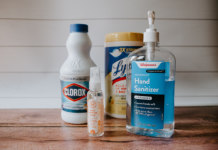Are you suffering from bad breath? Have you tried everything—mouthwash, gum, mints, tongue scrapers—but to no avail? The culprit may actually be hiding in the back of your throat, in the form of a tonsil stone (tonsillolith).
I often get asked about these. It is easy for the patient to mistake them for “spots” on the tonsils due to strep throat. However, they are not always visible.
Not as detrimental to your health as, say, a kidney stone, a tonsil stone is a small, painless mass of calcium build up that sits in the crevices of your tonsils. Tonsil stones usually contain bacteria, food particles, and other debris that accumulates into a hard mass. Post-nasal drip from allergies seems to “set the stage” for getting tonsil stones. If you’ve tried everything possible to manage bad breath without results, it may be caused by one or several tonsil stones.
One of the easiest ways to see if you have a tonsil stone is to simply open your mouth. A white or yellow-looking glob of matter that ranges from the size of a small pea to more than an inch in width is known as a tonsil stone.
The easy answer to this problem is to eliminate the tonsil stone; however, in some cases this removal happens on its own. Sometimes a strong cough or sneeze can evoke a stone, or it can be swallowed without notice.
If it grows to a large size, it can produce symptoms including tonsillitis, earaches, or mild to strong throat discomfort. In rare cases, the tonsil stone may have to be removed by a doctor.
What Causes Tonsil Stones?
Tonsil stones form on the tonsils, which are part of the body’s lymphatic system that helps fight infection. Debris can become lodged in the nooks and crannies of the tonsil. When the debris and bacteria stay, it begins to harden and form white or yellowish masses of hardened calcium. Bacteria attaches to the hardened calcium thus contributing to a foul smell that can cause bad breath.
The predisposition to having tonsil stones is mostly dependent on the shape of the tonsils of the individual patient. Because adults have larger tonsils, stones usually occur in adults as opposed to children. However, there are different factors that could predispose one to experience chronic tonsil stones. According to Angela Epstein of Daily Mail in London, “It’s (tonsil stones) particularly common in those who have suffered from tonsillitis or who have a dry mouth as a result of medication such as painkillers, antidepressants, and high blood pressure tablets.”
Additionally, Christopher Y. Chang, M.D., with Fauquier Ear Nose & Throat Consultants in Warrenton, Virginia and Richard Thrasher, M.D., with The Ear Nose & Throat Centers of Texas in McKinney, Texas believe, “the numbers of adults with tonsil stones is on the rise due to large numbers of people who still have their tonsils.”
Am I Doomed with Bad Breath for Life?
Not at all. Tonsil stones can be removed and prevented. Here are some ways to eliminate stones from your tonsils.
Ways to Manage Tonsil Stones
- Gently scrape tonsil stones off with a toothbrush or cotton swab
- Gargle with salt water to dislodge them
- Use a specialized tonsil stone removal tool to push the debris out of the tonsils
- Drink plenty of water to flush debris out of the back of the mouth and keep saliva moving
- Gargle with warm water and a few drops of fresh squeezed lemon juice
- Maintain proper oral hygiene to eliminate food particles and debris
- Eat a balanced diet. Reduce dairy products as they promote mucous.
- Use Diamond Nutritionals’ Sinus Formula to naturally neutralize allergies and reduce, or eliminate, post-nasal drip. This popular product also contains what I call the “mucous buster” NAC ( N-Acetyl Cysteine). NAC has many wonderful properties, including use as a mucolytic.
Here’s an interesting video about removing tonsil stones.
If you’ve tried all of the methods above, and are still experiencing tonsil stones, you may want to consult your doctor to discuss other possible causes and treatments. If the stones are not the culprits for your bad breath, there could be a more serious medical issue at bay.
—
Photo credit: leyla.a / CC BY-SA 2.0









A great tool you can use to dislodge tonsil stones that are hiding behind or underneath your tonsil is a dental irrigation syringe. Because they squirt out water and in most cases have bent tips, they make it much easier to remove stones in a difficult position.
Also, because you squirt water you don’t need to reach as far into your throat making you less likely to gag. You can find these pretty cheap on amazon
Hi Lyle,
Thank you for the great tip! Our readers may find it useful!
Dr. Maxwell